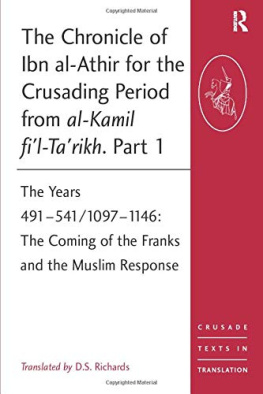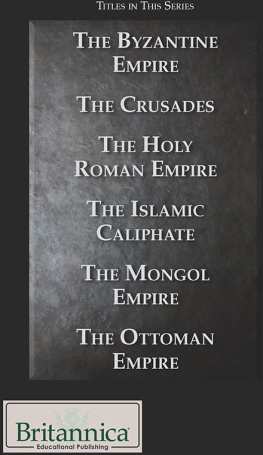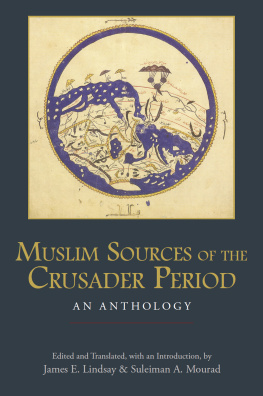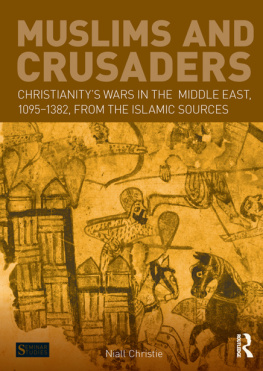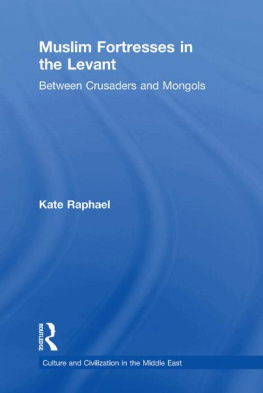This part covers the establishment of the Crusader states and the initial weak and divided response of Muslim regimes in the area, the moribund Fatimid caliphate in Egypt and competing emirs in Syria and Mesopotamia. The strengthening of the Muslim reaction is typified by the career of Zanki, which also illustrates the important links with events in the orbit of the Abbasid caliphate and the Saljuq sultanate.
The crusading movement bequeathed to its future historians a legacy of sources unrivalled in their range and variety. Crusade Texts in Translation presents these sources document in fascinating detail as well as the motivations and viewpoints, military efforts and spiritual lives, of the participants in the crusades. They narrate the internal histories of the states and societies which crusaders established or supported in the many regions where they fought. Some sources have been translated in the past but the vast majority have been available only in their original language. Crusade Texts in Translation provides a wide ranging corpus of texts, most of them translated for the first time, which illuminate the history of the crusades and the crusader-states from every angle, including that of their principal adversaries, the Muslim powers of the Middle East.
D.S. Richards has retired as Lecturer in Arabic at the Oriental Institute, and is Emeritus Fellow of St Cross College, University of Oxford, U.K.
Crusade Texts in Translation
Editorial Board
Malcolm Barber (Reading), Peter Edbury (Cardiff), Bernard Hamilton (Nottingham), Norman Housley (Leicester), Peter Jackson (Keele)
Titles in the series include:
Colin Imber
The Crusade of Varna, 144345
Carol Sweetenham
Robert the Monks History of the First Crusade
Historia Iherosolimitana
Paul Crawford
The Templar of Tyre
Part III of the Deeds of the Cypriots
D.S. Richards
The Rare and Excellent History of Saladin or al-Nawadir al-Sultaniyya wal-Mahasin al-Yusufiyya by Baha al-Din Ibn Shaddad
Thomas A. Fudge
The Crusade against Heretics in Bohemia, 14181437 Sources and Documents for the Hussite Crusades
Peter W. Edbury
The Conquest of Jerusalem and the Third Crusade Sources in Translation
Bernard S. Bachrach and David S. Bachrach
The Gesta Tancredi of Ralph of Caen
A History of the Normans on the First Crusade
Janet Shirley and Peter W. Edbury
Guillaume de Machaut
The Capture of Alexandria
The Chronicle of Ibn al-Athr for the Crusading Period from al-Kmil fl-tarkh
The Chronicle of Ibn al-Athr for the Crusading Period from al-Kmil fl-tarkh Part 1
The Years 491-541/1097-1146
The Coming of the Franks and The Muslim Response
Translated by
D.S. Richards
First published 2006 by Ashgate Publishing
Published 2016 by Routledge
2 Park Square, Milton Park, Abingdon, Oxon 0X14 4RN
711 Third Avenue, New York, NY 10017, USA
Routledge is an imprint ofthe Taylor & Francis Group, an informa business
Copyright D. S. Richards, 2006
D. S. Riehards has asserted his moral right under the Copyright, Designs and Patents Act, 1988, to be identified as the translator of this work.
All rights reserved. No part of this book may be reprinted or reproduced or utilised in any form or by any electronic, mechanical, or other means, now known or hereafter invented, including photocopying and recording, or in any information storage or retrieval system, without permission in writing from the publishers.
Notice:
Product or corporate names may be trademarks or registered trademarks, and are used only for identification and explanation without intent to infringe.
British Library Cataloguing in Pubiication Data
Ibn al-Athir, Izz al-Din, 1160-1233
The chronicle of Ibn al-Athir for the Crusading Period from al-Kamil il-Tarikh
Part 1: The Years 491-541/1097-1146: The Coming of the Franks and the Muslim
Response. - (Crusade Texts in translation; 13)
1. Crusades - Early works to 1800.I. Title II. Richards, D. S. (Donald Sidney),
1935
940.182
Library of Congress Control Number: 2006926785
ISBN 13: 978-0-7546-4077-6 (hbk)
ISBN 13: 978-0-7546-6950-0 (pbk)
Contents
Ibn al-Athrs chronicle, al-Kmil fl-tarkh , which one could translate as The Perfect or Complete Work of History , is an impressive achievement. Within the wide chronological and geographical scope of its pages it presents a narrative that starts with Creation, passes through those areas of pre-Islamic history that Muslims were aware of, that is, accounts of Persian, Roman and Jewish history and the traditions of the Arabs before Islam, and then traces in a broadly annalistic fashion the history of the caliphate and the various dynasties that succeeded one another in the Islamic world from Spain to the borders of central Asia.
His narrative ends abruptly towards the end of the second decade of the thirteenth century just a little before his death. The standard nineteenth-century edition reproduces from the manuscripts the rubric that announced the year 629/1231-2 but was never followed by any further text. Other, mainly minor, indications within the text indicate that the work did not ever receive a final revision.
In the manuscript age the relative paucity of books and the fragility of stored knowledge meant that there was a continual reprocessing of previous writings. Especially in the field of historiography, as time passed and historys tale grew longer, there was a strong tendency to reduce previous material to manageable proportions and then append an account of ones own times. This is clearly what Ibn al-Athr was about over the whole range of his work. For the first centuries of Islam his main source was the chronicle of al-abar. The introduction to the Kmil that Ibn al-Athr wrote makes it clear that his aim was to produce a discrete work which would enable students of history to dispense with the need to consult a variety of works. This may well be described as an undertaking of abbreviation but the result is a work of considerable dimensions. The edition used for this translation amounts to twelve substantial volumes. It is the comprehensiveness of his narrative that gives this work its value, as does the fact that, following on from those parts that are based on al-abar, this chronicle preserves sources that have not otherwise survived. That these sources are not always explicitly identified is regrettable. However, it is a generally held opinion that the study of Islamic history would be much the poorer without Ibn al-Athrs Kmil .
This volume appears in the series Crusader Texts in Translation. Ibn al-Athrs account of the Muslim struggle with the Crusaders is, of course, the justification for its inclusion and this translation starts from the point at which Ibn al-Athr introduces into his narrative reference to the background and initial progress of the First Crusade, that is, the year 491/1097-8, which comes in the tenth volume of the Beirut edition. This translation ends with the death of Zank in 541/1146, which may be understood to mark the end of a stage in the response of Islam to the phenomenon of the Crusades.

